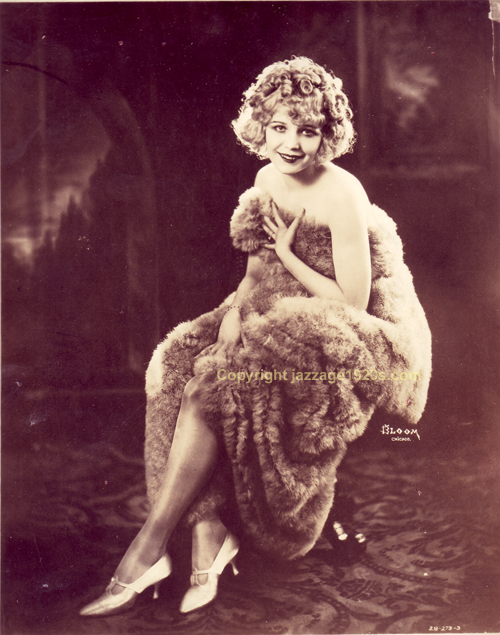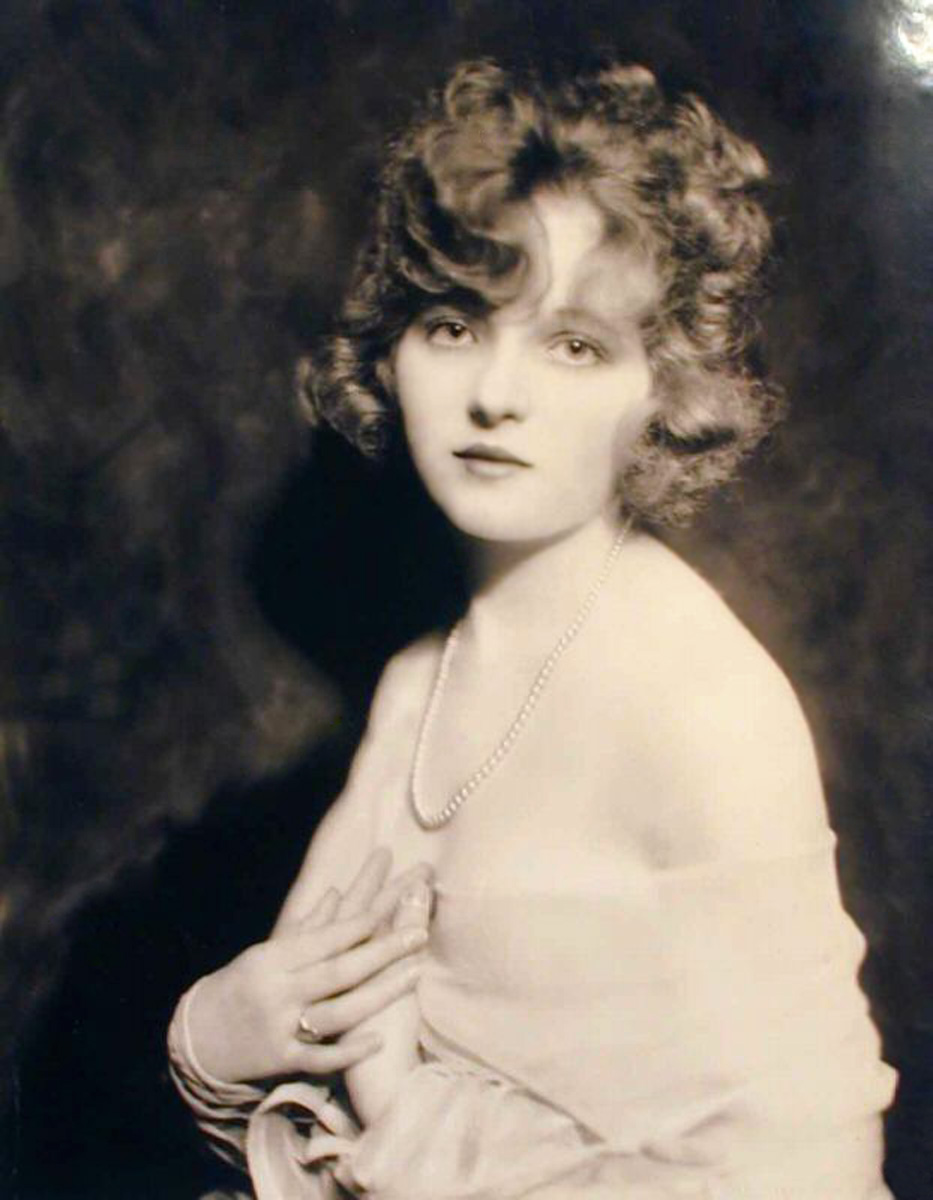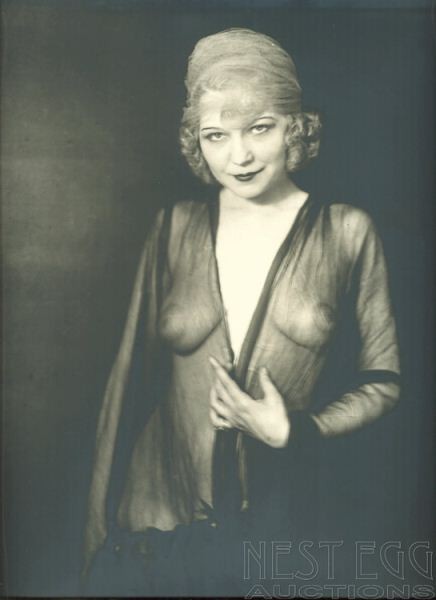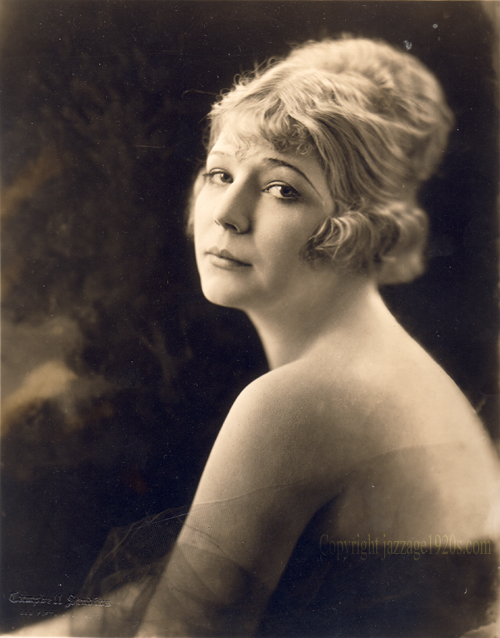Bee Palmer
Bee Palmer (* as Beatrice C. Palmer September 11, 1894 in Chicago, † December 22, 1967 ) was an American vaudeville singer and dancer. She had the ( self-inflicted loaded ) nickname Shimmy Queen for the early popularization of the shimmy dance.
Life
Bee Palmer was one of four children of Swedish immigrants in Chicago. It was described as vivacious and attractive blonde from magnetic stage presence and was a successful vaudeville artist who made the shimmy dance popular, then considered daring. Some of them even accompanied himself singing at the piano. She joined in 1918 in New York City in the Midnight Frolics Ziegfeld Follies of, where she sang, among others, the song I want to learn to Jazz Dance ( I want to shimmie ). She also appeared in other Broadway shows. In 1920 she went with its own revue Oh Bee! (written by Herman Timberg ) on tour, in which she sang, danced the shimmy and was accompanied by an own jazz band. They appeared in December 1920 in New Orleans, where some of the musicians of the later New Orleans Rhythm Kings ( NORK ) added came as Leon Rappolo, Emmett Hardy and other jazz musicians, including trombonist Santo Pecora. She continued to keep her pianist Al Seal, whom she married secretly in March 1921. The band called Bee Palmer and the New Orleans Rhythm Kings and the name carried over to the later NORK. January 1921 sued her manager she outstanding payments due and she was temporarily prevented from appearance in Chicago since the decor and wardrobe had been seized. From 27 February to 2 March 1921 she played in Davenport ( Iowa), where the young Bix Beiderbecke heard her and her band of jazz musicians. Soon after the tour in Peoria (Illinois ) was dissolved after clerics had complained about the allegedly daring dances and the manager of Palmer were nervous. Many jazz musicians in the backing band as Rappolo, Pecora and Hardy went back to Davenport to join the band of Carlisle Evans on the Mississippi paddle steamer Capitol.
October 1921 sued her husband Al seal the boxer Jack Dempsey for an alleged affair, but what this denied - the process fizzled. Seal and Palmer filed after a divorce suits, but they remained for seven years until the divorce in 1928 married. Bee Palmer went on to Chicago and on Broadway. Several times she planned with well-known jazz musicians like Fletcher Henderson and Eddie Condon's Chicagoans to occur, which is not realized for various reasons. The end of 1928 they made movies with the Paul Whiteman Orchestra in Carnegie Hall, but they were not part of White 's film King of Jazz by 1930. It was the late 1920s, a well-known figure in New York society life.
You made some test recordings for Columbia and Victor in the period from 1918 to 1924, and 1929 for Columbia with Frankie Trumbauer and musicians of the Whiteman orchestra. The photographs were not published until the CD era, and Singin ' the Blues is considered as an early example of vocalese ( the solos by Frankie Trumbauer and Bix Beiderbecke modeled ). In 1930 she was co-author of the song Please do not talk about me when I'm gone ( with the composer Sam H. Stept and lyricist Sidney Clare ).
In 1933 she married her former pianist at Jack Finna (or pinna). She was living in Chicago and was soon on her artistic career.










